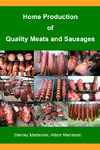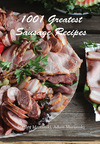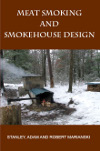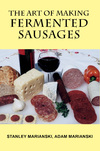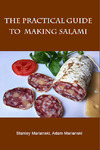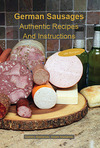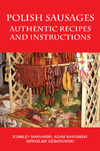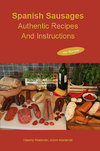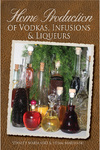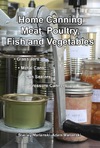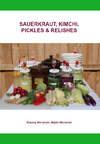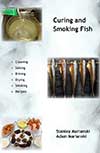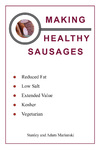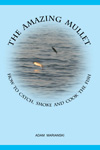Meats and Sausages
Smoked Sausages
Smoked sausages are made of cured meat and can be further subdivided as:
- Cold smoked sausages. These sausages are not cooked and must be refrigerated. They may be dried at about 54° F (12° C), and after losing sufficient moisture, they will not require refrigeration as long as they are kept at this temperature in a dark, lightly ventilated room at 65% humidity or less. This group includes spreadable fermented sausages (Mettwurst type) and slow-fermented sausages (Hungarian salami); however, be aware that the majority of salami-type dry sausages are not smoked.
- Hot smoked sausages. Those sausages are fully cooked following smoking. Most smoked products fit into this group.
Smoked Sausages Cured with Nitrite
The step that differentiates smoked sausages from others is curing meat with sodium nitrite (Cure #1). This is a must procedure when smoking meats below 170° F (77° C) smoke temperature. The combination of low temperature with evaporating moisture from the sausages and the absence of oxygen creates the right conditions for the growth of the Clostridium botulinum pathogen, the strongest poison known to man. Although cases of food poisoning by Clostridium botulinum are very rare, they have one thing in common: they are fatal. If every manufacturer adds nitrite to naturally smoked meats to protect the consumer, a hobbyist should do the same to protect his loved ones. Smoking is done at temperatures from 50° F (10° C) to 140° F (60 °C).
Many people say they don’t use nitrites when smoking meats. Most barbecue or grill meats at high temperatures, which kill all bacteria, including Clostridium botulinum. They fully cook meats with smoke, which is not the same as the classical meat smoking method. Adding nitrite protects against pathogenic bacteria but also provides such benefits as a characteristic cured meat flavor, a pink color that is liked and expected by the consumer, delays the rancidity of fats, and delays meat color change due to light and oxygen.
Smoking Sausages Without Nitrite
A common question is: can I smoke meats without nitrite? Of course, you can. As we have explained above, you should smoke your sausage at above 170° (77° C) which will affect its texture and will produce an inferior color due to the lack of nitrite. The sausage will most likely be greasy on the outside. You may accept it, but a commercial plant can not produce inferior products that the consumer will not purchase.
Color of a Smoked Sausage
Cold smoked products develop a yellow-gold color. As the smoking progresses, the color will become light brown and dark brown. Keep in mind that cold smoking continues for days, even weeks at a time, with occasional breaks in between.
Hot smoked products are smoked in a matter of hours. The color depends mainly on the length of smoking. The color will start changing from light brown to dark brown. The type of wood will influence it as well, oak creates brown, and hickory develops reddish color. Mixing oak with hickory develops a nice red-brown color. Heavy smoke will increase the amount of smoke deposition.
Keep in mind that sausages owe their characteristic flavors to the different spices they contain. Long smoking with heavy smoke can overpower these subtle spice aromas. A sausage can become nothing but a piece of meat with a heavy, smoky flavor. Smoking a thin 1/2” piece of meat like jerky for 3 hours with heavy smoke might make it bitter and non-palatable. When smoking, the rule ”easy goes a long way” holds very much true. Large pieces of meat such as hams, bacon, and loins will require longer smoking times and should be smoked until the typical dark color is obtained.
Using softwood from evergreen trees will make casings much darker, even black, due to the deposits of tar and resin that this wood contains. Wet casings or excessive levels of humidity in the smokehouse will attract those deposits, creating darker sausages.
The Length of Smoking
This criteria is very loosely defined. In most cases, smoking is done when the desired color is obtained. Preservation is accomplished by cooking and keeping the product in a refrigerator, and smoking today is just a flavoring step. In the past, cold smoking/drying continued for weeks as it was the preservation method.
Hot smoking is performed with dense smoke, so smoke deposition is more intense. About one hour of smoking time for 1” (25 mm) of sausage diameter is plenty. If your sausage is stuffed into 36 mm casing, 1½ hours is fine. Nothing will happen if it is smoked for 2 or 3 hours; the smoky flavor will be more intense and the sausage darker. Smoking much longer with heavy smoke might create a bitter flavor.
Rearranging Smoke Sticks or Smoke Carts During Smoking
In the past, the most common smokehouse was the so-called gravity smokehouse, which was sometimes quite large and tall. Meats were hung on different levels, and the smoke would rise due to the natural draft. Sausages hanging higher would pick up moisture from the sausages below, and they would become wet. They would attract unburnt wood particles and soot, which will affect the color and flavor. Smoke and heat distribution differs in different areas of the chamber especially if the smokehouse is large. If smoking continued for a long time, this would become a serious problem if left untreated. Periodic rearranging of the smokesticks would correct those problems. Keep in mind that a large smokehouse had many levels of smokesticks that were loaded with sausages or fish, but the fire pit generating smoke or supplying heat was located at the bottom. In today’s units, electrical blowers force smoke or hot air into all areas of the smokehouse, and then the exhaust fan removes the smoke. The temperature and relative humidity are easily controlled.
For more on smoking sausages see fermented sausages and safety hurdles
Smoking technology is covered in meat smoking


